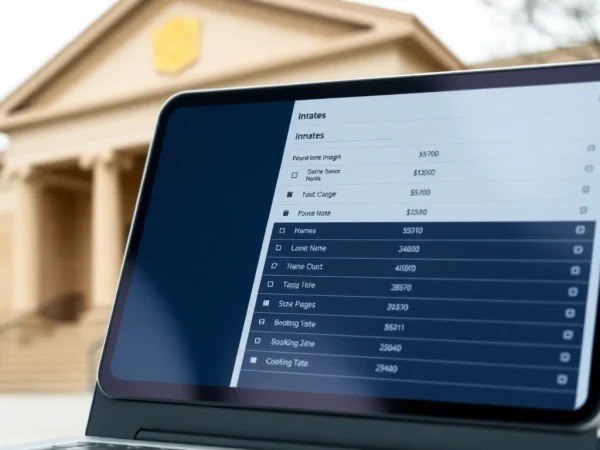Understanding Trademark Registration in India and US: A Comprehensive Guide
Overview of Trademark Registration Processes
Trademark registration is a crucial step for businesses seeking to protect their intellectual property. It grants legal protections to brands, ensuring that their names, logos, and slogans cannot be used without permission by others. In both India and the United States, trademark registration serves to differentiate goods and services in the marketplace and is essential for maintaining brand identity. It also allows businesses to take legal action against unauthorized use, enhancing their competitive edge and marketability.
As we explore the intricacies of trademark registration in India and US, it is vital to understand how the processes differ, what is required for successful application, and how to navigate the legal landscapes effectively.
Differences Between India and US Trademark Registration
Understanding the distinct legal frameworks governing trademark registration in India and the United States is critical for any business operating in these regions. In India, trademark registration is primarily governed by the Trade Marks Act, 1999, along with the Trade Marks Rules, 2017. This framework emphasizes the first-to-use principle, meaning that the first party to use a trademark in commerce establishes rights to that mark.
Conversely, the United States follows a slightly different approach under the Lanham Act, which allows the registration process to function on a first-to-file basis. This means that the first to file a trademark application, regardless of use, has precedence. Some of the notable differences include:
- Renewal Periods: In the US, trademarks need to be renewed every ten years, along with a declaration of use every five years. In India, registered trademarks must be renewed every ten years without an additional declaration.
- Application Process: The Indian application process is handled by the Controller General of Patents, Designs, and Trade Marks, while in the US, the application is filed with the United States Patent and Trademark Office (USPTO).
- Opposition Period: The US assigns a 30-day opposition period post-publication for any entity to contest the registration, whereas India offers a 90-day window for opposition.
Application Requirements in India and US
The application requirements for trademark registration vary significantly between India and the US, reflecting their respective legal cultures. In India, applicants must provide the following:
- A completed application form
- A representation of the trademark logo or name
- A list of goods or services associated with the trademark, categorized according to the Nice Classification System
- Proof of use or intent to use the trademark in commerce
- Payment of the requisite fee
In the US, applicants must prepare:
- Form USPTO 1 for the application
- A clear depiction of the trademark
- A description of the related goods or services using the Nice Classification
- Specimens or examples demonstrating how the trademark is used in commerce, such as product labels or advertising materials
- Payment of the filing fee, which varies based on the number of classes and filing method
Key Terms and Definitions
Before diving deeper into the registration processes, it’s essential to understand key terms frequently encountered in trademark registration:
- Trademark: A recognizable sign, design, or expression identifying products or services of a particular source.
- Service Mark: Similar to a trademark but specifically identifies and distinguishes the source of a service rather than a product.
- Classification: The categorization of goods/services under the Nice Classification system to streamline the registration process.
- Opposition: A legal process where third parties can contest the registration of a trademark during a specified period.
- Expiry/Renewal: The period before a trademark registration needs renewal to maintain its validity.
Step-by-Step Guide to Trademark Registration
How to File a Trademark Application in India
The process of filing a trademark application in India typically involves the following steps:
- Conduct a Trademark Search: Begin by conducting a comprehensive search of existing trademarks to ensure that your trademark is unique and does not infringe on existing registrations.
- Prepare Your Application: Gather all necessary documents, including the trademark representation, classification of goods/services, and proof of use.
- File the Application: Submit your application via the Trademark Registry’s e-filing platform or through a physical application at the appropriate registry office.
- Examination by the Registrar: The application will be reviewed, and any objections will be communicated by the Registrar.
- Publication: If the trademark is accepted, it will be published in the Trademark Journal for public opposition.
- Issuance of Registration: After the opposition period, if no objections arise, the trademark is registered, and a certificate is issued.
Filing Process for US Trademark Registration
In the United States, the trademark registration process generally follows these steps:
- Trademark Search: Conduct a thorough search in the USPTO database to check for existing or pending trademarks that could conflict with your application.
- Application Preparation: Complete the online application form on the USPTO website and prepare required documents, including a clear depiction of the trademark and specimens of use.
- Submit the Application: File your application electronically through the USPTO’s TEAS (Trademark Electronic Application System).
- Application Review: The USPTO examining attorney will review the application and may issue an Office Action if there are any issues.
- Publication for Opposition: After approval by the examining attorney, your trademark will be published in the Official Gazette, allowing for opposition.
- Registration: If there are no oppositions, the trademark registration will be granted, and you will receive a registration certificate.
Common Pitfalls to Avoid
When embarking on the trademark registration journey, several common pitfalls could hinder success:
- Neglecting a Thorough Trademark Search: Failing to conduct an exhaustive trademark search can lead to potential conflicts and legal disputes.
- Insufficient Documentation: Inaccuracies or omissions in documentation can result in application rejections.
- Ignoring Renewal Requirements: Many businesses overlook the importance of timely renewals and declarations, risking the loss of their trademarks.
- Not Monitoring Trademark Use: Failing to monitor how your trademark is used in the market can lead to unintentional infringements.
Legal Framework Governing Trademarks
Indian Trademark Act and Its Implications
The Indian Trademark Act of 1999, which governs trademark practices in the country, offers various protections for trademark owners. Key aspects include:
- Rights Conferred: Registration provides the exclusive rights to use the trademark concerning the goods and services for which it is registered.
- Infringement Actions: Trademark owners can take legal action against unauthorized use of their marks.
- Passing Off Remedies: Even unregistered trademarks can be protected via common law remedies against passing off.
Understanding these implications ensures that businesses can leverage their trademarks effectively in India’s competitive landscape.
Understanding the Lanham Act in the US
The Lanham Act governs federal trademark law in the United States. It outlines the processes for trademark registration and sets forth protections for trademark owners. The Act defines trademark infringement, which occurs when an unauthorized party uses a trademark in a way that causes confusion about the source of goods or services. Moreover, the Act enables trademark owners to pursue federal legal remedies against infringement and to enforce their rights across the states.
International Treaties Affecting Trademark Laws
International treaties also play a significant role in shaping trademark laws. Notably, the Madrid Protocol facilitates the international registration of trademarks, allowing trademarks registered in one member country to extend their protections to others. This streamlined process is of particular importance for businesses looking to expand globally, as it simplifies the trademark registration process across jurisdictions.
Costs and Timeframes for Registration
Fees Involved in Trademark Registration in India
The fees for trademark registration in India can vary based on several factors, including the type of applicant (individual or company) and the number of classes under which the trademark is filed. As of 2023, the basic fee for filing a trademark application starts at INR 4,500 for individuals and INR 9,000 for small entities and companies. Additional fees may apply for multiple classes and other procedural requisites.
Cost Breakdown for US Trademark Filing
In the United States, the application fees can range from $250 to $750 per class of goods/services, using the TEAS Plus or TEAS Standard application systems, respectively. Additionally, there might be costs associated with required legal services, trademark search reports, and ongoing maintenance fees for renewals.
Typical Processing Times in Both Countries
The trademark processing times can also differ significantly. In India, the entire registration process typically takes between 6 to 12 months, depending on the examination procedures and any oppositions. In the US, the timeframe is usually about 8 to 12 months, subject to the complexities of the application and potential opposition procedures.
Best Practices for Protecting Your Trademark
Maintaining Your Trademark Rights
Once a trademark is registered, it is crucial for businesses to maintain their rights through continuous use and monitoring. Regular audits of market use help identify unauthorized applications or registered marks that could infringe upon existing rights. Establishing surveillance systems or retaining professional services can enhance monitoring efforts.
Enforcement and Infringement Issues
Enforcement of trademark rights is vital for maintaining brand integrity. Companies should be prepared to take legal action against infringers and have a clear protocol for determining when and how to pursue infringement claims. Early legal intervention often helps prevent more significant losses and preserves the brand’s reputation.
Renewal and Monitoring Strategies
Finally, businesses should adopt a proactive approach to renewals and trademark monitoring. Setting reminders for renewal deadlines and seeking legal expertise for complex queries can aid in proper trademark management. In addition, businesses should continuously educate themselves about trademark law changes that could affect their rights.








